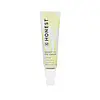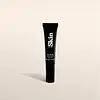What's inside
What's inside
 Key Ingredients
Key Ingredients

 Benefits
Benefits

 Concerns
Concerns

 Ingredients Side-by-side
Ingredients Side-by-side

Water
Skin ConditioningGlycerin
HumectantGlyceryl Stearate Se
EmulsifyingCetearyl Alcohol
EmollientCoco-Caprylate/Caprate
EmollientPropanediol
SolventCetyl Alcohol
EmollientDimethicone
EmollientHelianthus Annuus Seed Oil
EmollientBellis Perennis Flower Extract
Skin ConditioningCoconut Alkanes
EmollientSilica
AbrasiveGlyceryl Stearate Citrate
EmollientSaccharomyces Ferment Filtrate
HumectantHieracium Pilosella Extract
MaskingTetrahexyldecyl Ascorbate
AntioxidantTrisodium Ethylenediamine Disuccinate
1,2-Hexanediol
Skin ConditioningHydroxyacetophenone
AntioxidantSodium Acetylated Hyaluronate
HumectantSodium Hyaluronate
HumectantSclerotium Gum
Emulsion StabilisingXanthan Gum
EmulsifyingButyrospermum Parkii Butter
Skin ConditioningCitric Acid
BufferingTocopherol
AntioxidantSodium Citrate
BufferingCaprylyl Glycol
EmollientSodium Benzoate
MaskingSodium Dehydroacetate
PreservativeCI 77891
Cosmetic ColorantCI 77491
Cosmetic ColorantWater, Glycerin, Glyceryl Stearate Se, Cetearyl Alcohol, Coco-Caprylate/Caprate, Propanediol, Cetyl Alcohol, Dimethicone, Helianthus Annuus Seed Oil, Bellis Perennis Flower Extract, Coconut Alkanes, Silica, Glyceryl Stearate Citrate, Saccharomyces Ferment Filtrate, Hieracium Pilosella Extract, Tetrahexyldecyl Ascorbate, Trisodium Ethylenediamine Disuccinate, 1,2-Hexanediol, Hydroxyacetophenone, Sodium Acetylated Hyaluronate, Sodium Hyaluronate, Sclerotium Gum, Xanthan Gum, Butyrospermum Parkii Butter, Citric Acid, Tocopherol, Sodium Citrate, Caprylyl Glycol, Sodium Benzoate, Sodium Dehydroacetate, CI 77891, CI 77491
Water
Skin ConditioningGlycerin
HumectantPropanediol
SolventIsononyl Isononanoate
EmollientCetearyl Alcohol
EmollientCaprylic/Capric Triglyceride
MaskingCetyl Alcohol
EmollientLactococcus Ferment Lysate
Skin ConditioningCetearyl Ethylhexanoate
EmollientAvena Sativa Kernel Oil
Skin ConditioningSqualane
EmollientSilica
AbrasiveBenzyl Alcohol
PerfumingCetearyl Glucoside
EmulsifyingHydroxyacetophenone
AntioxidantSucrose Stearate
EmollientGlycogen
HumectantCarbomer
Emulsion StabilisingSodium Acetylated Hyaluronate
HumectantDehydroacetic Acid
PreservativePistacia Lentiscus Gum
MaskingLactic Acid
BufferingGlucose
HumectantSodium Chloride
MaskingSodium Benzoate
MaskingCaprylyl Glycol
EmollientCitric Acid
BufferingSodium Hydroxide
BufferingAcetyl Hexapeptide-8
HumectantWater, Glycerin, Propanediol, Isononyl Isononanoate, Cetearyl Alcohol, Caprylic/Capric Triglyceride, Cetyl Alcohol, Lactococcus Ferment Lysate, Cetearyl Ethylhexanoate, Avena Sativa Kernel Oil, Squalane, Silica, Benzyl Alcohol, Cetearyl Glucoside, Hydroxyacetophenone, Sucrose Stearate, Glycogen, Carbomer, Sodium Acetylated Hyaluronate, Dehydroacetic Acid, Pistacia Lentiscus Gum, Lactic Acid, Glucose, Sodium Chloride, Sodium Benzoate, Caprylyl Glycol, Citric Acid, Sodium Hydroxide, Acetyl Hexapeptide-8
 Reviews
Reviews

Ingredients Explained
These ingredients are found in both products.
Ingredients higher up in an ingredient list are typically present in a larger amount.
Caprylyl Glycol is a humectant and emollient, meaning it attracts and preserves moisture.
It is a common ingredient in many products, especially those designed to hydrate skin. The primary benefits are retaining moisture, skin softening, and promoting a healthy skin barrier.
Though Caprylyl Glycol is an alcohol derived from fatty acids, it is not the kind that can dry out skin.
This ingredient is also used as a preservative to extend the life of products. It has slight antimicrobial properties.
Learn more about Caprylyl GlycolCetearyl alcohol is a mixture of two fatty alcohols: cetyl alcohol and stearyl alcohol. It is mainly used as an emulsifier. Emulsifiers help prevent the separation of oils and products. Due to its composition, it can also be used to thicken a product or help create foam.
Cetearyl alcohol is an emollient. Emollients help soothe and hydrate the skin by trapping moisture.
Studies show Cetearyl alcohol is non-toxic and non-irritating. The FDA allows products labeled "alcohol-free" to have fatty alcohols.
This ingredient is usually derived from plant oils such as palm, vegetable, or coconut oils. There is debate on whether this ingredient will cause acne.
Due to the fatty acid base, this ingredient may not be Malassezia folliculitis safe.
Learn more about Cetearyl AlcoholCetyl Alcohol is a fatty alcohol. Fatty Alcohols are most often used as an emollient or to thicken a product.
Its main roles are:
Though it has "alcohol" in the name, it is not related to denatured alcohol or ethyl alcohol.
The FDA allows products labeled "alcohol-free" to have fatty alcohols.
Learn more about Cetyl AlcoholCitric Acid is an alpha hydroxy acid (AHA) naturally found in citrus fruits like oranges, lemons, and limes.
Like other AHAs, citric acid can exfoliate skin by breaking down the bonds that hold dead skin cells together. This helps reveal smoother and brighter skin underneath.
However, this exfoliating effect only happens at high concentrations (20%) which can be hard to find in cosmetic products.
Due to this, citric acid is usually included in small amounts as a pH adjuster. This helps keep products slightly more acidic and compatible with skin's natural pH.
In skincare formulas, citric acid can:
While it can provide some skin benefits, research shows lactic acid and glycolic acid are generally more effective and less irritating exfoliants.
Most citric acid used in skincare today is made by fermenting sugars (usually from molasses). This synthetic version is identical to the natural citrus form but easier to stabilize and use in formulations.
Read more about some other popular AHA's here:
Learn more about Citric AcidGlycerin is already naturally found in your skin. It helps moisturize and protect your skin.
A study from 2016 found glycerin to be more effective as a humectant than AHAs and hyaluronic acid.
As a humectant, it helps the skin stay hydrated by pulling moisture to your skin. The low molecular weight of glycerin allows it to pull moisture into the deeper layers of your skin.
Hydrated skin improves your skin barrier; Your skin barrier helps protect against irritants and bacteria.
Glycerin has also been found to have antimicrobial and antiviral properties. Due to these properties, glycerin is often used in wound and burn treatments.
In cosmetics, glycerin is usually derived from plants such as soybean or palm. However, it can also be sourced from animals, such as tallow or animal fat.
This ingredient is organic, colorless, odorless, and non-toxic.
Glycerin is the name for this ingredient in American English. British English uses Glycerol/Glycerine.
Learn more about GlycerinHydroxyacetophenone is antioxidant with skin conditioning and soothing properties. It also boosts the efficiency of preservatives.
This ingredient is not irritating or sensitizing.
Propanediol is an all-star ingredient. It softens, hydrates, and smooths the skin.
It’s often used to:
Propanediol is not likely to cause sensitivity and considered safe to use. It is derived from corn or petroleum with a clear color and no scent.
Learn more about PropanediolSilica, also known as silicon dioxide, is a naturally occurring mineral. It is used as a fine, spherical, and porous powder in cosmetics.
Though it has exfoliant properties, the function of silica varies depending on the product.
The unique structure of silica enhances the spreadability and adds smoothness, making it a great texture enhancer.
It is also used as an active carrier, emulsifier, and mattifier due to its ability to absorb excess oil.
In some products, tiny microneedles called spicules are made from silica or hydrolyzed sponge. When you rub them in, they lightly polish away dead skin layers and enhance the penetration of active ingredients.
Learn more about SilicaSodium Acetylated Hyaluronate is a type of Hyaluronic Acid.
Hyaluronic Acids help moisturize, soothe, and protect the skin.
Read about common types of Hyaluronic Acid here:
Sodium Hyaluronate
Hydrolyzed Hyaluronic Acid
Hyaluronic Acid
Sodium Benzoate is a preservative. It's used in both cosmetic and food products to inhibit the growth of mold and bacteria. It is typically produced synthetically.
Both the US FDA and EU Health Committee have approved the use of sodium benzoate. In the US, levels of 0.1% (of the total product) are allowed.
Sodium benzoate works as a preservative by inhibiting the growth of bacteria inside of cells. It prevents the cell from fermenting a type of sugar using an enzyme called phosphofructokinase.
It is the salt of benzoic acid. Foods containing sodium benzoate include soda, salad dressings, condiments, fruit juices, wines, and snack foods.
Studies for using ascorbic acid and sodium benzoate in cosmetics are lacking, especially in skincare routines with multiple steps.
We always recommend speaking with a professional, such as a dermatologist, if you have any concerns.
Learn more about Sodium BenzoateWater. It's the most common cosmetic ingredient of all. You'll usually see it at the top of ingredient lists, meaning that it makes up the largest part of the product.
So why is it so popular? Water most often acts as a solvent - this means that it helps dissolve other ingredients into the formulation.
You'll also recognize water as that liquid we all need to stay alive. If you see this, drink a glass of water. Stay hydrated!
Learn more about Water